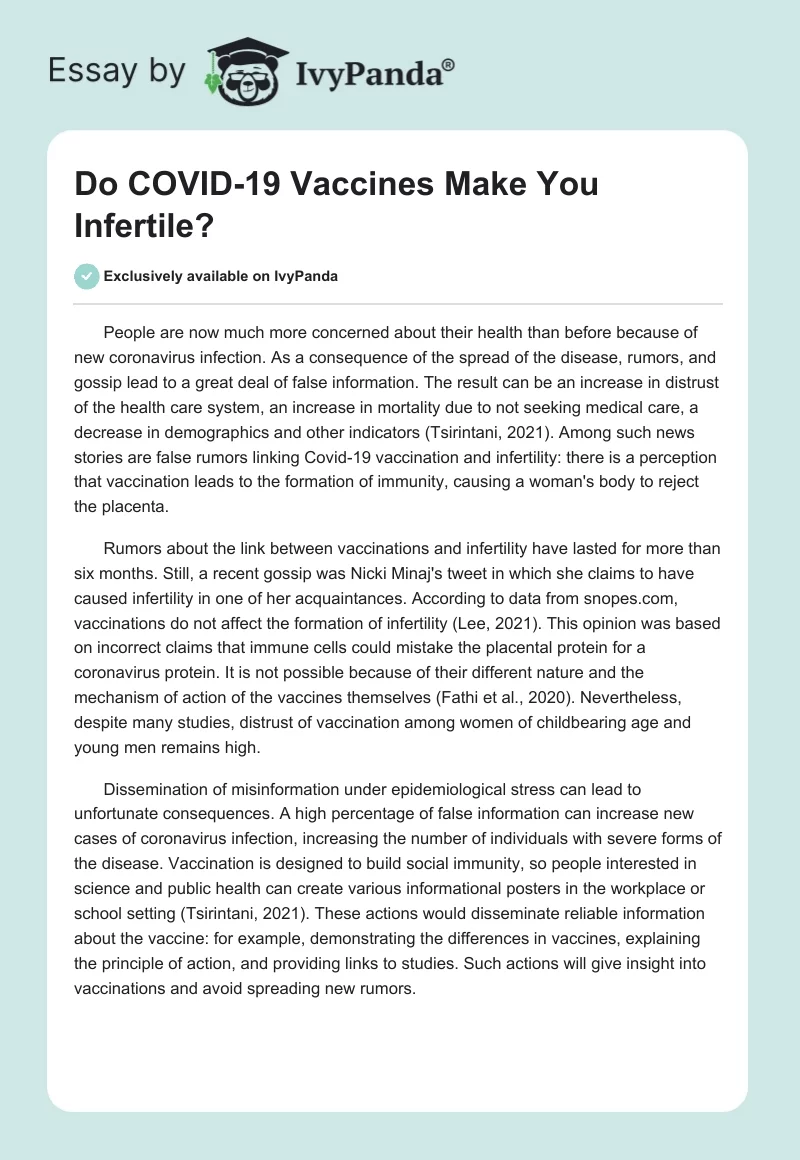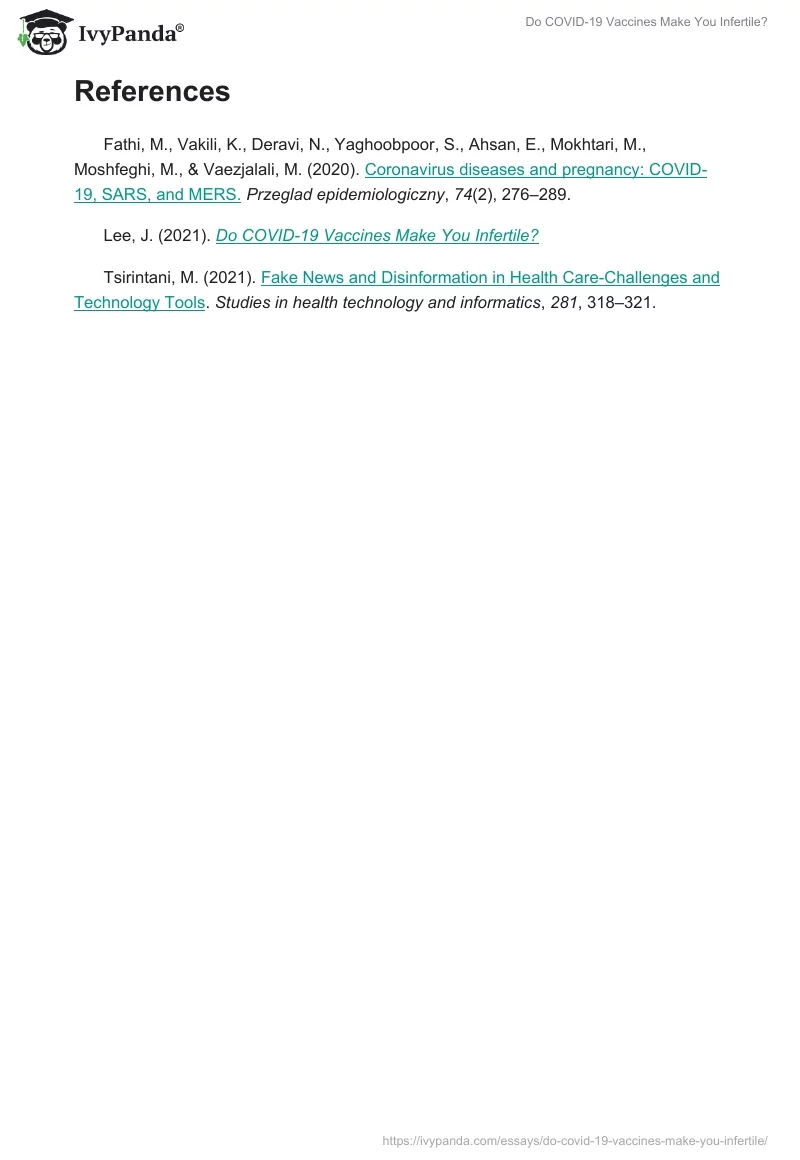People are now much more concerned about their health than before because of new coronavirus infection. As a consequence of the spread of the disease, rumors, and gossip lead to a great deal of false information. The result can be an increase in distrust of the health care system, an increase in mortality due to not seeking medical care, a decrease in demographics and other indicators (Tsirintani, 2021). Among such news stories are false rumors linking Covid-19 vaccination and infertility: there is a perception that vaccination leads to the formation of immunity, causing a woman’s body to reject the placenta.
Rumors about the link between vaccinations and infertility have lasted for more than six months. Still, a recent gossip was Nicki Minaj’s tweet in which she claims to have caused infertility in one of her acquaintances. According to data from snopes.com, vaccinations do not affect the formation of infertility (Lee, 2021). This opinion was based on incorrect claims that immune cells could mistake the placental protein for a coronavirus protein. It is not possible because of their different nature and the mechanism of action of the vaccines themselves (Fathi et al., 2020). Nevertheless, despite many studies, distrust of vaccination among women of childbearing age and young men remains high.
Dissemination of misinformation under epidemiological stress can lead to unfortunate consequences. A high percentage of false information can increase new cases of coronavirus infection, increasing the number of individuals with severe forms of the disease. Vaccination is designed to build social immunity, so people interested in science and public health can create various informational posters in the workplace or school setting (Tsirintani, 2021). These actions would disseminate reliable information about the vaccine: for example, demonstrating the differences in vaccines, explaining the principle of action, and providing links to studies. Such actions will give insight into vaccinations and avoid spreading new rumors.
References
Fathi, M., Vakili, K., Deravi, N., Yaghoobpoor, S., Ahsan, E., Mokhtari, M., Moshfeghi, M., & Vaezjalali, M. (2020). Coronavirus diseases and pregnancy: COVID-19, SARS, and MERS.Przeglad epidemiologiczny, 74(2), 276–289.
Lee, J. (2021). Do COVID-19 Vaccines Make You Infertile?
Tsirintani, M. (2021). Fake News and Disinformation in Health Care-Challenges and Technology Tools. Studies in health technology and informatics, 281, 318–321.


